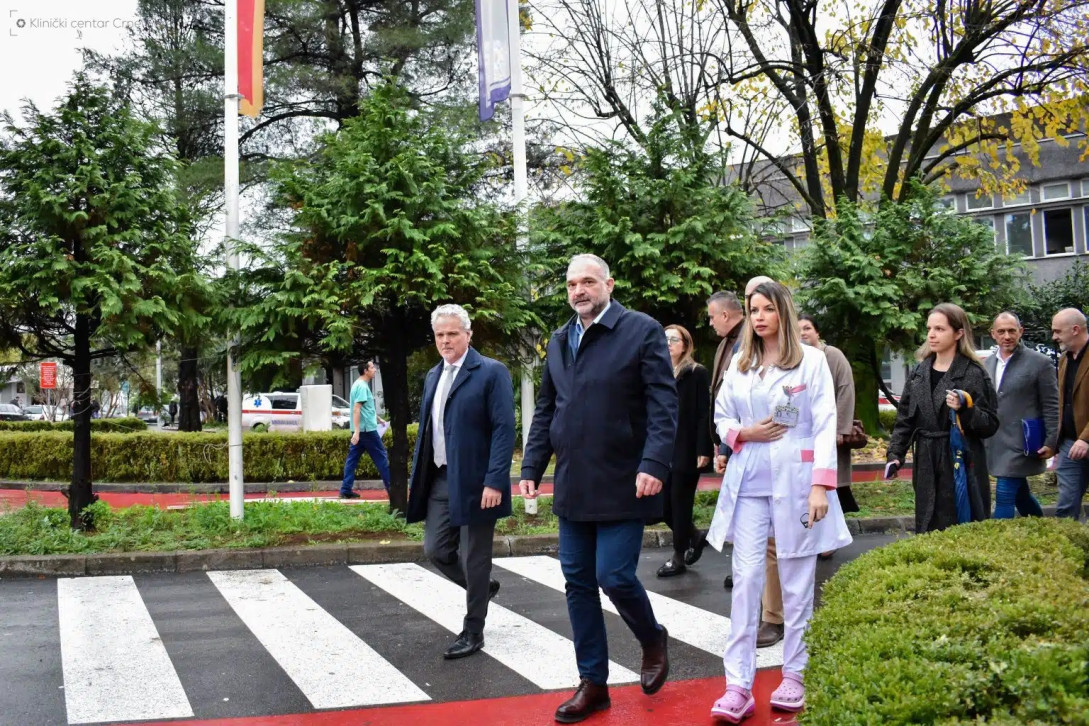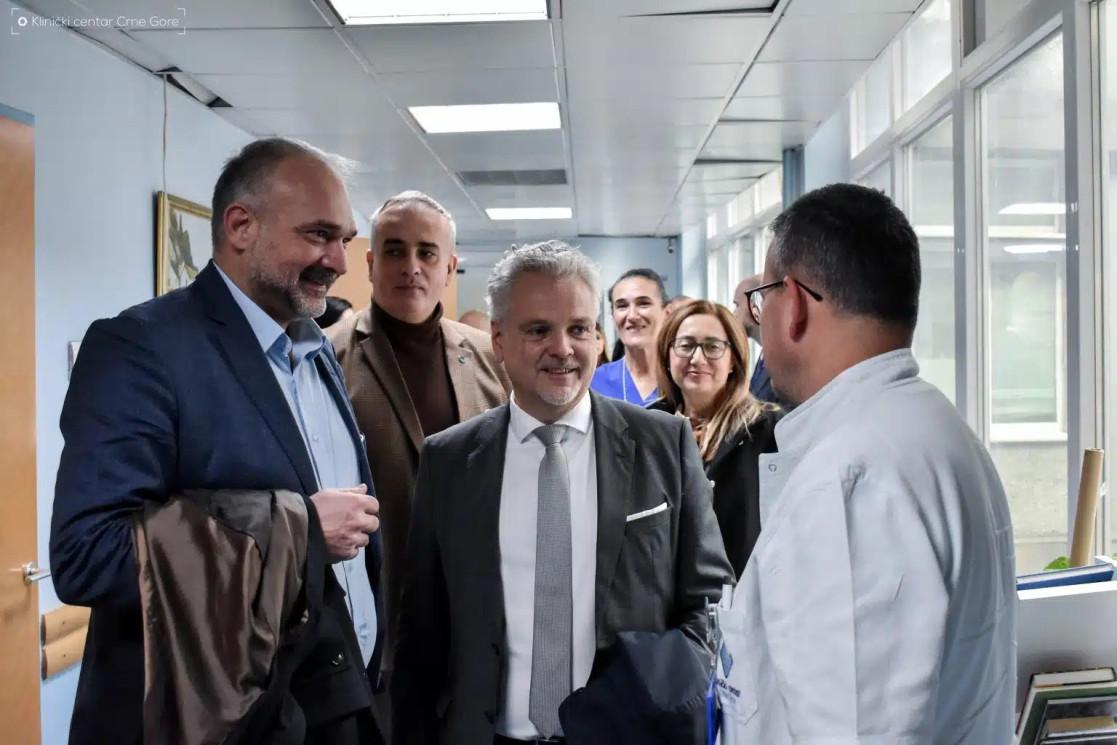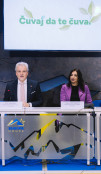Clinical Centre: From Polluter to Leader in Environmental Standards

The Clinical Centre of Montenegro (KCCG) will, in the near future, transform from one of the country’s largest sources of pollution into a leader in adopting modern environmental standards. This message was conveyed by the Ambassador of the European Union to Montenegro, H.E. Johann Sattler, the Director of KCCG, Dr Aleksandar Radović, and the Director of the NGO “Let’s Green Montenegro”, Vuk Vujisić, during the event marking the joining of the KCCG to the National Environmental Campaign “Čuvaj da te čuva”. To mark the occasion, a linden tree was symbolically planted in the KCCG courtyard.
During his visit to KCCG, Ambassador Sattler met with Director Radović and his team, and toured key segments of the institution. He expressed his satisfaction that KCCG is becoming a new member of the Čuvaj da te čuva” campaign coalition.

Copyright: Clinical Centre of Montenegro
“The Clinical Centre is one of the most important institutions in Montenegro, and I am pleased to see that Director Radović and his team are implementing what Montenegro has written into its Constitution — that it is an ecological state,” the Ambassador stated.
He added that the campaign demonstrates that positive change can be achieved quickly: “From tackling illegal landfills, to reducing the use of plastic bags, to resolving the issue of old car tyres. We are now moving on to the ecological responsibility of institutions. KCCG has joined us as a large and significant institution that, like all hospitals, produces substantial waste. Together, we will work on reducing total waste, separating it, and ensuring proper treatment of hazardous waste,” he emphasised.

Copyright: Clinical Centre of Montenegro
H.E. Sattler also announced support for the ecological modernisation of KCCG, including the replacement of the outdated heating system, which currently emits considerable amounts of carbon dioxide.
Director Dr Radović announced that KCCG will stop using fuel oil and transition to green energy sources.
Director of KCCG, Dr Aleksandar Radović, thanked Ambassador Sattler for his support and stressed that the visit was an opportunity to present the institution’s key development projects, including: the reconstruction of the Central Intensive Care Unit of the Clinic for Anaesthesiology, Intensive Care and Pain Therapy; the Clinic for Orthopaedics and Traumatology with its operating theatre; the Clinic for Urology with its operating theatre; the LIFE project in cooperation with the European Union; the energy efficiency project supported by the European Bank for Reconstruction and Development (EBRD); and the construction project for the new Clinic for Haematology with a PET CT unit in cooperation with the Council of Europe Development Bank (CEB).

Copyright: Clinical Centre of Montenegro
Dr Radović highlighted that KCCG is currently one of the largest polluters in Podgorica, as it continues to rely on fuel oil for heating even after 50 years.
“We use fuel oil throughout all 12 months because it is necessary for the functioning of the institution. This is absolutely unacceptable. The EBRD tender for energy efficiency is underway, after which we will transition to heat pumps, solar panels, and other environmentally friendly systems, just like all modern hospitals in Europe,” Dr Radović announced.
He also recalled previous successful projects with the EU, such as the construction of the modern Clinic for Infectious Diseases and Dermatovenerology, as well as the upcoming start of construction on the Clinic for Haematology with the PET Scanner Centre.
The initiator of the “Let’s Green Montenegro” initiative, Vuk Vujisić, reminded that over 200 trees have been planted in the institution’s courtyard within only one year as part of the “Let’s Green KCCG” campaign.
“The KCCG courtyard, visited by more than a million people annually, is becoming a true green oasis and an example of ecological transition. From being the largest polluter, KCCG will become an institution with almost zero emissions, with parks, green areas, and an environment that offers patients and visitors a break from the bustle of the city,” Vujisić stated.
He announced solutions for managing municipal and medical waste, as well as the introduction of recycling and sorting systems. Plans also include installing solar panels in car park areas.
“In two to three years, the KCCG courtyard will be completely transformed — and KCCG will become a model of what ecological transition in Montenegro looks like,” Vujisić concluded.





